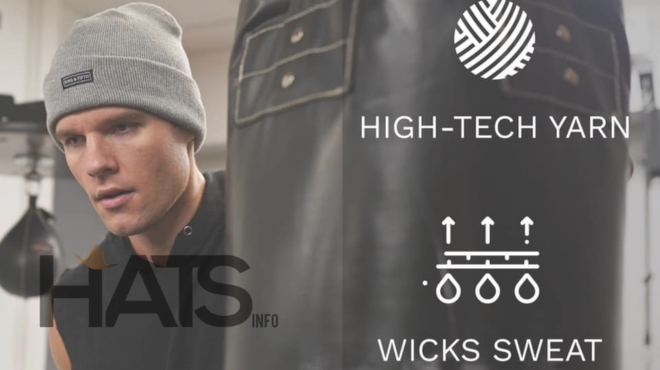Most people concentrate on what clothing and shoes to wear while working out, but what about headwear? Can you work out in a beanie? Yes, however, it is dependent on a few factors. In this article, we’ll look at tips, safety considerations, and the benefits and drawbacks of wearing a beanie while exercising.
Tips for working out in a beanie

If you decide to work out in a beanie, here are some tips to keep in mind:
1. Choose the appropriate material:
Choose a beanie made from a natural fiber like cotton or wool if you want to keep your head warm without overheating. You won’t overheat because of the airflow created by these materials.
2. Check a comfortable fit:
Wearing a beanie that is too tight might damage your hair and make it difficult to see. A beanie should fit snugly but not too tightly.
3. Keep it clean
Wearing a beanie while exercising might be comfortable, but it’s crucial to keep it clean to avoid the spread of germs.
Safety Concerns When Wearing a Beanie During Exercise
1. Vision Obstruction:
A beanie that’s too loose or not appropriately fitted can slip down and cover your eyes, obstructing your vision. This is especially dangerous if you’re using exercise equipment or doing activities that require good visual awareness, such as sports or outdoor activities.
2. Overheating:
When you’re working out, your body generates heat, and wearing a beanie can increase your body temperature, causing you to overheat. This is more likely to happen if you’re exercising in warm or humid conditions.
3. Hair Tangles:
If you have long hair and wear a beanie during exercise, it’s essential to be mindful of how you take it off. If you aren’t cautious, you might wind up with broken or knotted hair.
Pros of Wearing a Beanie During Exercise
1. Style:
Let’s be honest; wearing a beanie can make you look fabulous. If you like to make a fashion statement while working out, a beanie can add a touch of style to your gym attire.
2. Warmth:
If you’re exercising in cold weather, a beanie can help keep your head warm. This is especially important since your body loses heat through your head. By wearing a beanie, you can maintain your body temperature and avoid hypothermia.
3. Hair Management:
For those with longer hair, wearing a beanie can help keep it out of your face while you’re working out. This is especially helpful during activities like running or yoga, where loose hair can be a distraction.
Cons of Wearing a Beanie During Exercise
1. Comfort:
Beanie material and fit can vary greatly, so finding one that is comfortable during exercise can be a challenge. A beanie that’s too tight can cause headaches, while one that’s too loose can slip down over your eyes, obstructing your vision.
2. Safety:
If you’re doing a high-intensity workout, a loose-fitting beanie could potentially become a safety hazard. It could obstruct your vision or slip down and cover your face, causing an accident.
3. Sweat:
If you sweat a lot during exercise, wearing a beanie could cause your head to become too hot and sweaty. This can be uncomfortable and even lead to skin irritation or breakouts.
Conclusion
Overall, the decision to wear a beanie while working out is a personal one that depends on your individual preferences and the type of exercise you’re doing. If it feels comfortable and doesn’t interfere with your performance, then there’s no reason not to wear one.
FAQs:
Can you wear a beanie during outdoor activities like running or hiking?
Yes, a beanie can be a good choice for outdoor activities like running or hiking, especially during colder weather. Just make sure it fits properly and doesn’t obstruct your vision.
How tight should a beanie be when working out?
A beanie should fit snugly around your head, but not too tight. You want it to stay in place during exercise without causing any discomfort or headaches.
What types of beanie materials are best for working out?
When it comes to materials, opt for a beanie made of moisture-wicking fabric, such as polyester or merino wool. These materials are breathable, lightweight and will help keep your head dry during exercise.


